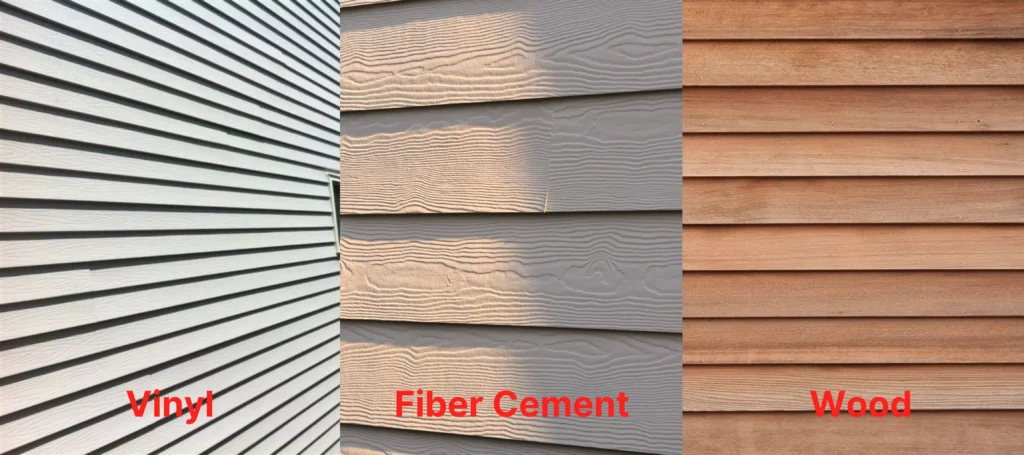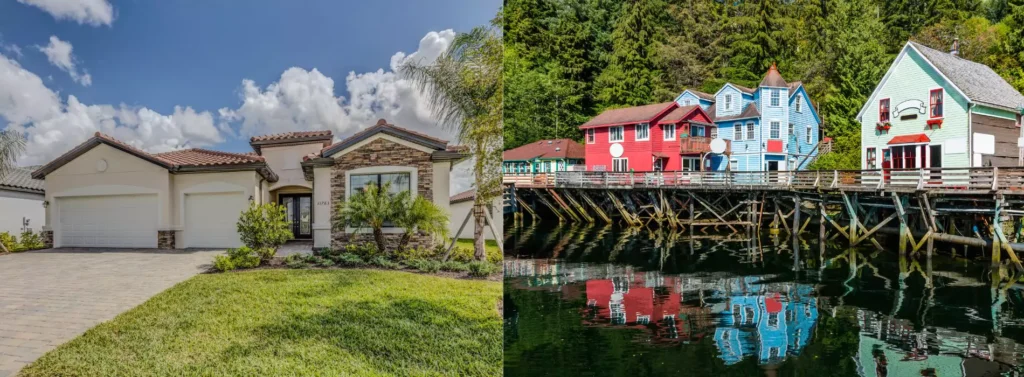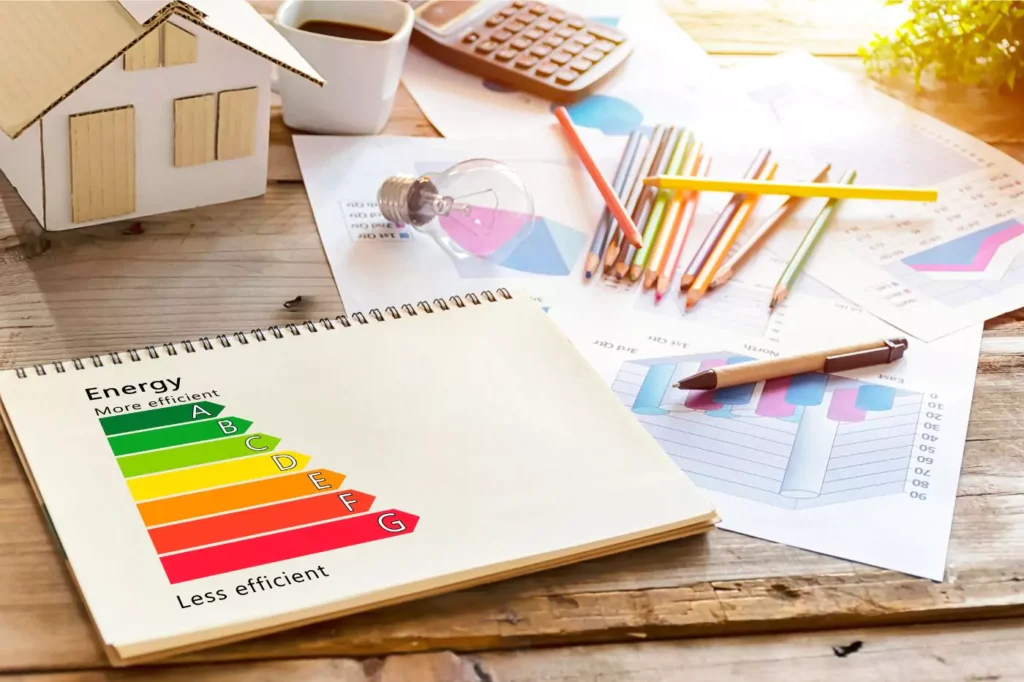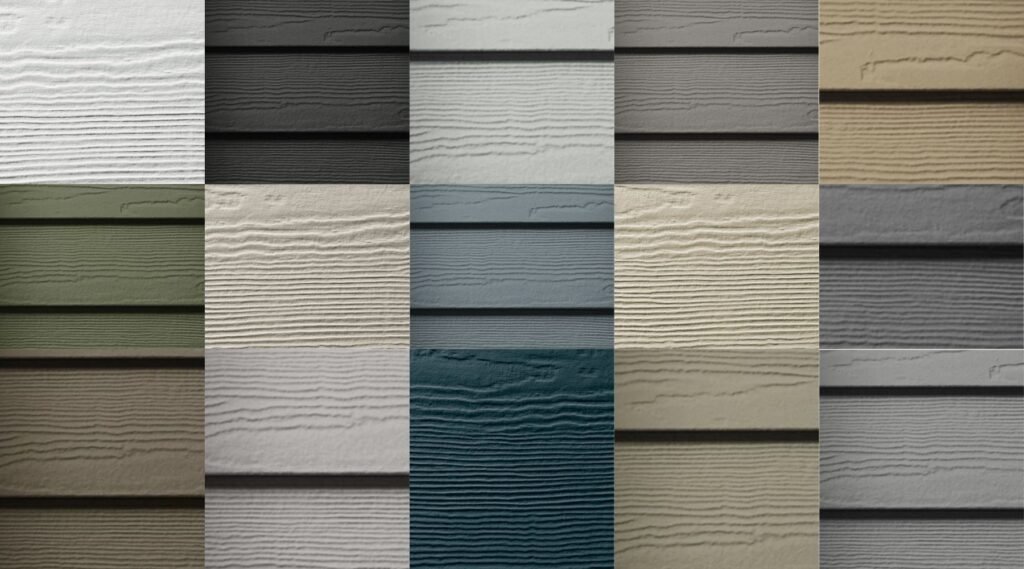It is estimated that 51% of new single-family homes in the U.S. have walls covered with siding made of vinyl, fiber cement boards or wood. That’s more than 800,000 families that have opted for it and tens of billions of dollars that have been invested in this form of exterior finishing. Just how to choose siding so as not to lose money? What should you be guided by? Let’s find out!
Table of Contents
Most Popular Siding Materials

First of all, the choice of siding should start with deciding on the material. The 3 most popular solutions are:
- Vinyl siding – usually the cheapest and still the most popular solution;
- Fiber cement siding (mainly James Hardie) – More expensive, but much more long-lasting and durable than vinyl one;
- Natural wood siding – very aesthetically pleasing and traditional, but relatively unresistant to weathering and the passage of time.
Each material has both advantages and disadvantages. For projects with smaller budgets, our recommended choice is vinyl siding, while if you value trouble-free operation, fiber cement or modern ACM panels in Chicago are worth considering. From our observations, wooden siding has enjoyed a steady, albeit rather low, popularity, mainly due to its cumbersome maintenance and rather high initial cost. This is a product for people who value aesthetics above all else.
Looking for a versatile, durable and affordable siding material, you should definitely pay special attention to fiber cement boards, not necessarily from James Hardie. This is an excellent, highly durable material that, with proper use, is capable of pleasing you for up to 50 years. Aluminum also seems to be a good option, but in hotter climates, such siding will tend to heat up.
What Factors to Consider When Choosing Siding Material?
As a Glenview siding contractor, we recommend analyzing several factors that have a huge impact on the choice of your cladding material:
Climate

Climate is one of the most important factors in your decision. Illinois as well as other states in the northeast of the United States often experience temperatures dropping below 0 celsius degrees, heavy rainfall in the fall and relatively high temperatures in the summer. This means that the local climate is very unfavorable for materials that are sensitive to both moisture and changes in temperature or UV radiation. The Arizona homeowner does not have to worry about water, but should pay special attention to the insulation properties and UV resistance of the material.
Architectural Style

The choice of siding should match the style in which your home is designed. Modern design will go well with ACM panels, fiber cement wall panels and aluminum, but cedar siding will not be attractive. Traditional homes, on the other hand, will look great with vinyl or wood, but large cladding boards will look like a nightmare.
Budget
Unfortunately, nearly everyone has a certain budget for home remodeling, and it’s not always possible to increase it by 15% or even 30%. If you have a limited budget, considering wood cladding is completely pointless – natural cedar, spruce or pine wood are simply expensive, and their maintenance also generates costs.
By far the cheapest solution is vinyl, which is up to 3 times cheaper than aluminum and about 40-60% cheaper than James Hardie fiber cement. Unfortunately, this, of course, affects durability, which in the case of this plastic is unsatisfactory, to say the least. When analyzing your budget, also check whether you can afford regular maintenance of your siding. Lack of cleaning, waterproofing and procrastination in repairs can have very serious consequences.
Energetic Efficiency

Not every siding material maintains good insulation performance. For example, ACM wall panels, with an extra layer of insulation between the outer and inner aluminum or composite panels, will do a much better job of protecting your home’s interior from cooling and heating than vinyl and fiber cement siding. Natural wood also has quite good insulation performance, and certainly outperforms stucco and aluminum in this regard.
The parameter that determines the thermal transmittance is “R”. The higher it is, the better insulation performance your walls will have. Alternatively, the lambda factor is also used. In its case, the lower the value, the better.
Color

In a sense, we’ve already mentioned color in the context of the architectural style and climate in which you live. Many houses are covered with light-colored siding for two reasons:
- White, light cream and light gray walls heat up much less than dark walls, especially black;
- For many years, white was the standard color for homes across most states, by homeowners conducting renovations to replicate patterns they already knew.
We must also admit that when using dark or distinctive siding colors, the risk of making an exterior design mistake is much higher. Take into account that your house will most likely look much more favorable when you match it with the surrounding buildings – a coherent and harmonious whole will be created.
Environmental Friendliness

Virtually every material used in the construction industry has a negative impact on the environment. At the stage of production, processing, transportation and installation, greenhouse gases are emitted and waste is generated, which is inevitable. However, it is worth remembering that natural wood is completely biodegradable and can be disposed of much more easily than fiber cement. On the other hand, vinyl can be recycled and in this way, it is possible to obtain completely new siding.
Also, fiber cement can be considered as an ecological solution – although the production, processing and disposal are not indifferent to the environment, the very long service life and extremely simple maintenance make products from brands such as James Hardie a reasonable choice.
What Is The Best Siding Material?
In our opinion, the choice is never clear-cut, but we can look at current market trends and the expectations of our more than 10,000 customers, the undisputed leader is James Hardie and the fiber cement siding (also known as HardiePlank, HardieBoard) produced by this company. This is one of the most technologically advanced and probably the most durable material that can be used for exterior wall finishing. Thanks to the use of cement, products made with this technology are completely resistant to mold, termites, UV radiation and water.
In addition to its good mechanical properties, fiber cement also attracts with its price and huge range of colors. In exchange for a rather low amount, you get access to a wide range of color variants, from arctic white to red, green, blue and orange to charcoal black. We’re almost certain that you’ll be able to find a texture and color that will suit your needs and help you achieve a stunning facade design.



